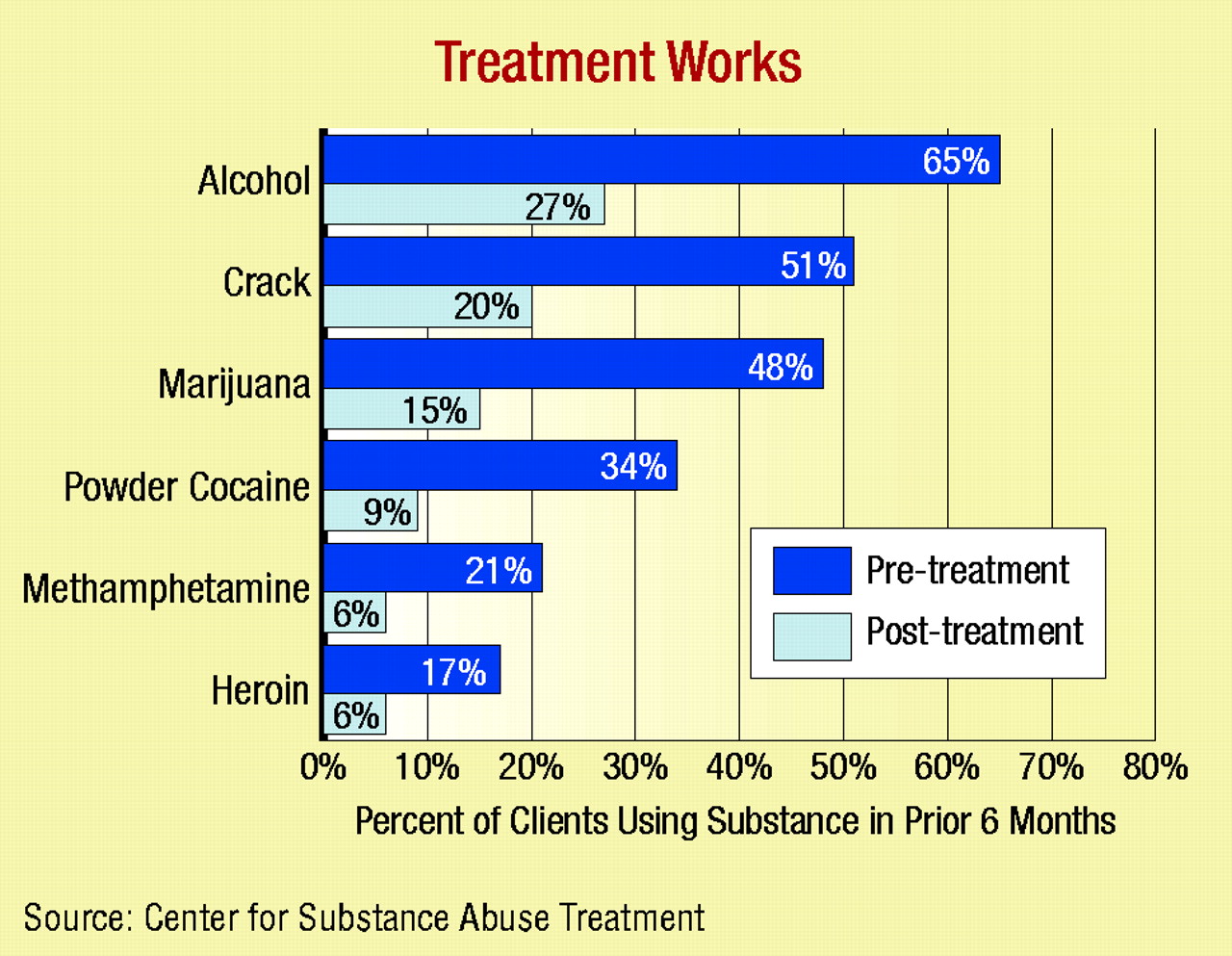Drug- and alcohol-dependent women who are pregnant or who have children significantly reduce their alcohol or drug use as well as criminal behavior following treatment in a residential substance abuse treatment program, according to a report from the Substance Abuse and Mental Health Services Administration’s (SAMHSA) Center for Substance Abuse Treatment (CSAT).
The report also found that the rates of premature delivery, low birth weight, and infant mortality rates were significantly improved for women who participated in long-term residential substance abuse treatment while they were pregnant.
The report, released by CSAT last month, evaluated the effectiveness of programs specifically designed for substance abuse treatment in women who were pregnant or had children.
“There’s no question that treatment provides a second chance to mothers and children,” said Tommy G. Thompson, secretary of Health and Human Services, at a press conference announcing the release of the report. “And we need to do everything we can to give them that opportunity. We must continue to make effective community-based treatment programs available to those who need it.”
The project involved 50 CSAT-funded residential substance abuse treatment facilities. Each facility received a five- or six-year grant that provided funding and technical assistance for development of facilities tailored to provide long-term (six to 12 months) residential treatment for pregnant and postpartum women with children under one year old or women with children over one year of age.
Healthier Moms, Healthier Kids
Use of crack cocaine declined from 51 percent of the women studied six months before treatment to 27 percent six months after treatment. Similar reductions were noted in use of several other substances, including powder cocaine (from 34 percent to 9 percent), marijuana (from 48 percent to 15 percent), methamphetamine (from 21 percent to 6 percent), and heroin (from 17 percent to 6 percent).
Alcohol consumption was similarly significantly reduced; 65 percent of the women had reported drinking alcohol six months prior to starting treatment, compared with 27 percent six months after treatment.
The programs achieved a rate of premature delivery during treatment of 7.3 percent, 70 percent lower than the expected 24 percent rate of premature delivery seen among untreated alcohol or drug abusers (based on recent hospital-based studies). The incidence of low birth weight was reduced to 5.7 percent, 84 percent below the expected 35 percent seen in untreated alcohol or drug abusers and the infant mortality rate experienced by the mothers in treatment was 0.4 percent, 67 percent lower than the 1.2 percent expected in this population.
These rates for adverse outcomes in the treatment programs among pregnant women who abuse substances are not only much lower than would be predicted in untreated substance abusing women, Thompson said, but they are also lower than the rates reported for all American women in U.S. vital statistics.
Unique Pilot Program
Each of the programs was uniquely structured to provide gender-specific and culturally appropriate treatment services; on-site residential care for the patients’ infants or young children to allow patients to maintain supervised parenting relationships throughout their treatment; and comprehensive services for both the patient and their infant/children—substance abuse treatment and prenatal, pediatric, medical, and mental health care. In addition, vocational, parenting, legal, nursery/preschool, and transportation services were provided through each of the 50 programs.
The number of children a woman had at the time of acceptance into the treatment program was not limited; the number of children for each mother ranged from one to seven. When possible and appropriate, the children’s fathers, if willing, were included in the treatment protocol as well.
Reducing Overall Costs
“These programs indicate that substance abuse treatment can save taxpayers money that otherwise would be spent on other medical costs,” said H.Westley Clark, M.D., J.D., M.P.H., CSAT director. “Data in a 1998 study on drug-exposed infants indicate that it cost an additional $7,700 in medical care before these babies could leave the hospital after being born. The infants in our study, whose mothers were in residential substance abuse treatment, avoided low birth weight, premature delivery, and death at rates that are better than the rates for all U.S. pregnancy outcomes. This saves not only dollars, but heartache and misery for the family, friends, and indeed the community.”
Longer term data indicate that 60 percent of the patients treated through the pilot program remained free of drugs or alcohol six months following discharge from the programs. In addition, six months following discharge, those patients who stayed in treatment longer than three months were more likely to remain alcohol and drug free, less likely to be arrested, more likely to report employment as their main source of income, and more likely to report having custody of one or more of their children.
“These programs are a win-win for everyone,” Clark told Psychiatric News. “The mothers are able to become and stay drug and alcohol free, their children are born and grow up healthier, and families have a better chance of staying together.” The overall cost of the treatment programs, Clark said, was well worth the investment, given the long-term savings in child health and welfare as well as the criminal justice systems.
The report was released as part of SAMHSA’s 12th Annual National Alcohol and Drug Addiction Recovery Month, observed each September to applaud the courage of people in recovery and recognize the progress made in substance abuse treatment services. This year’s theme was “We Recover Together: Family, Friends, and Communities.”
“Addiction tears families apart,” said Joseph H. Autry III, M.D., acting SAMHSA administrator. “We know effective treatment can bring families back together. Our job now is to continue to put what we have learned into the hands of community-based treatment providers. Recovery Month gives us an opportunity to raise awareness that treatment can and does restore hope and reclaim lives.”
The report, “1993-2000 Residential Treatment Programs for Pregnant and Parenting Women,” is available on the Web from SAMHSA’s information clearinghouse at www.health.org. ▪


